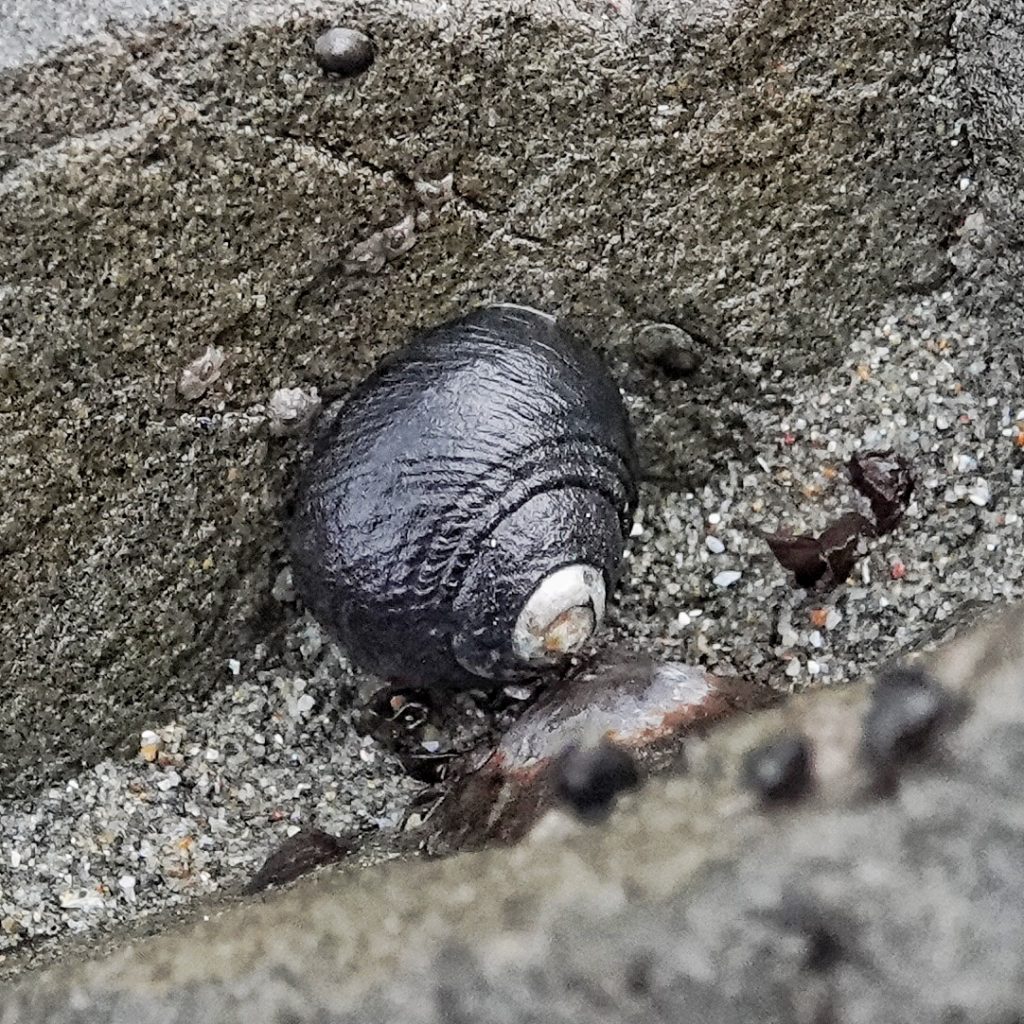
I love tidepools! I love the smell of the ocean, the roar of the surf, and the disorientation that comes from suddenly shifting my focus from a few square inches of habitat to hundreds of square miles of coastline and open ocean. I love the often cryptic nature of their inhabitants, and the way they can seem so empty of life until my looming presence shocks the creatures into movement. I love the way the falling tide exposes ever more diversity, and the fact that areas that are separated by only a narrow band of stone can be so different in diversity and abundance.
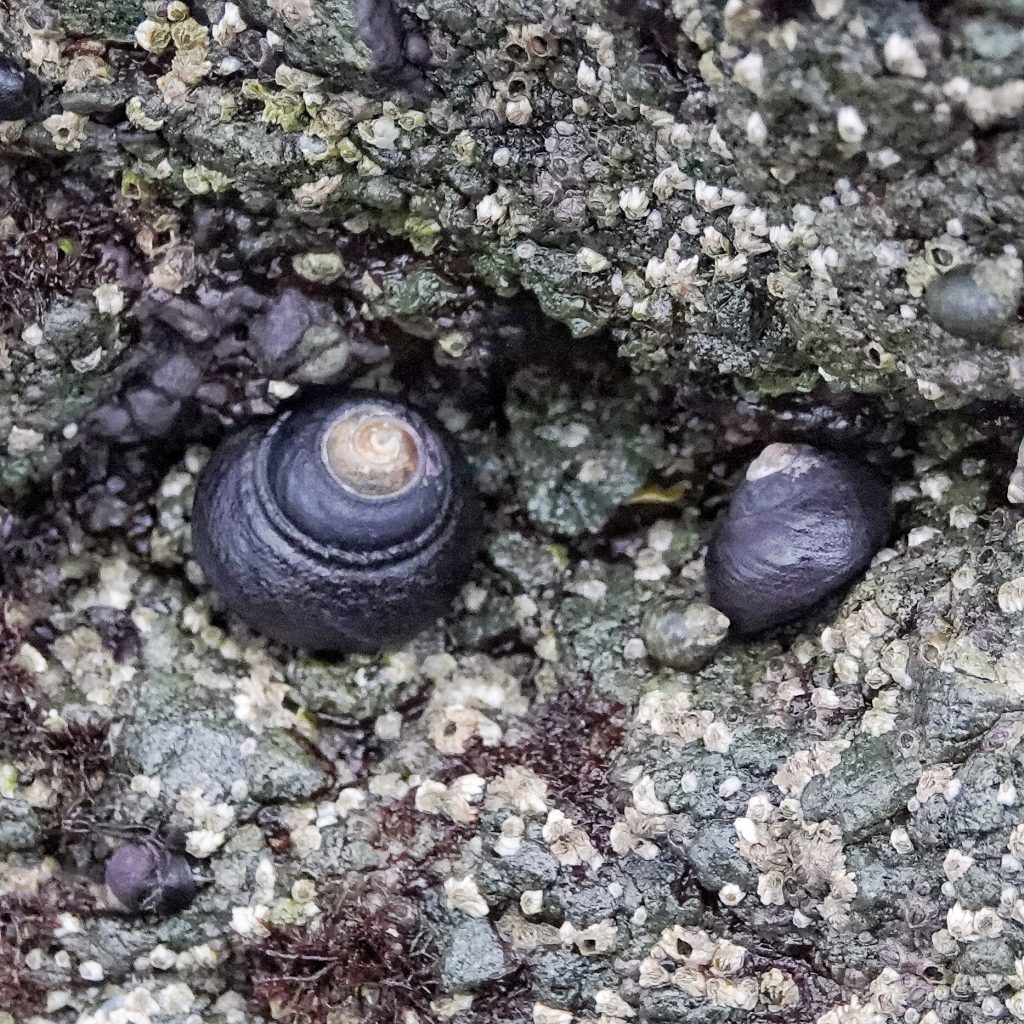
Long before this project, back in the days when I wasn’t obsessed with labeling the living organisms I could find, I used to spend whole days on a rocky coastline, moving outward and inward with the tide, wading in Levis and tennis shoes, fearless of crashing waves and slippery rocks, supremely happy to be an observer of these habitats. It’s a little different now, and I’m at an age where visions of broken ribs, hips, skull leap to mind each time my foot skids among the jagged rocks. But still I am drawn magnetically to these habitats whose visibility to my eyes is fleeting, and I try to balance enthusiasm with caution, as I did the day I found these snails at Lone Ranch beach, outside Brookings, Oregon.
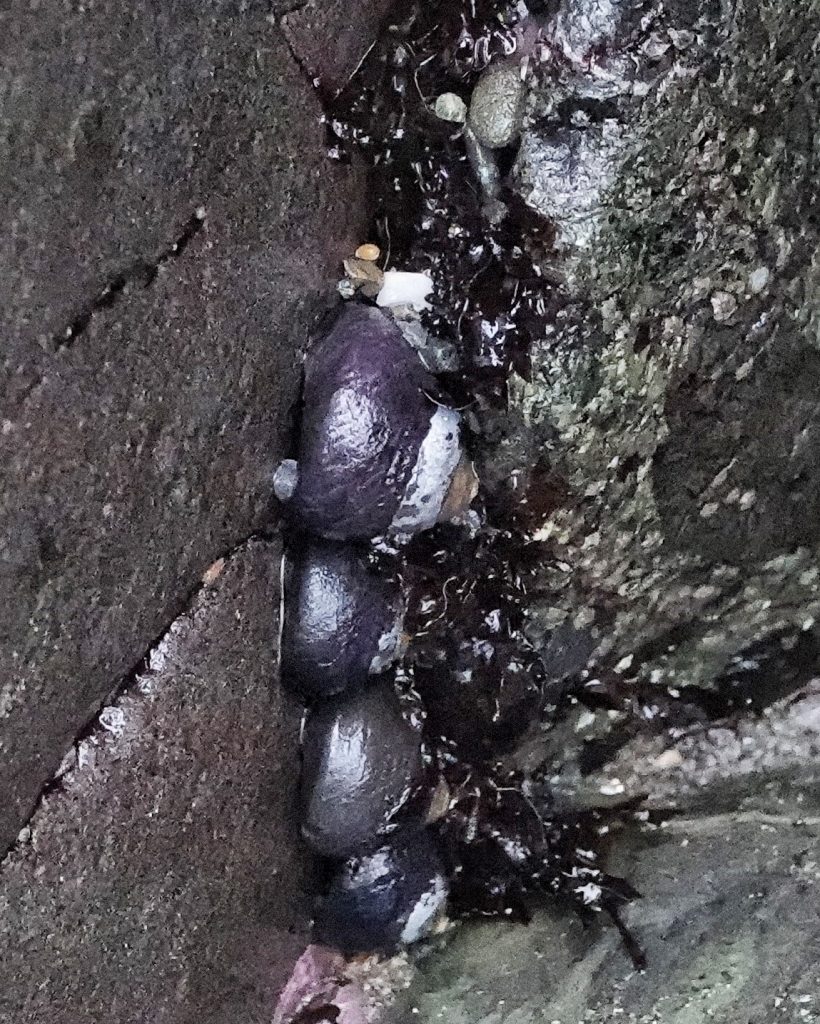
I have to admit that Tegula funebralis (Black Turban Snails) are the only marine snails I can identify on sight. Marine snail identification is tricky, and best done with a specimen in hand, and I am conflicted at best about killing these creatures, or even prying them temporarily off the rocks. However, an idea occurred to me on this last trip, although unfortunately it wasn’t until I’d left the coast and was editing my photos in camp, and that was that I should collect snail shells that are empty (and I usually find at least a few before the hermit crabs get to them), and try to identify them to make my own field guide that relies on traits I’ve learned. And I should do the same thing with the also tricky limpets. That way I could, potentially, identify them in situ.
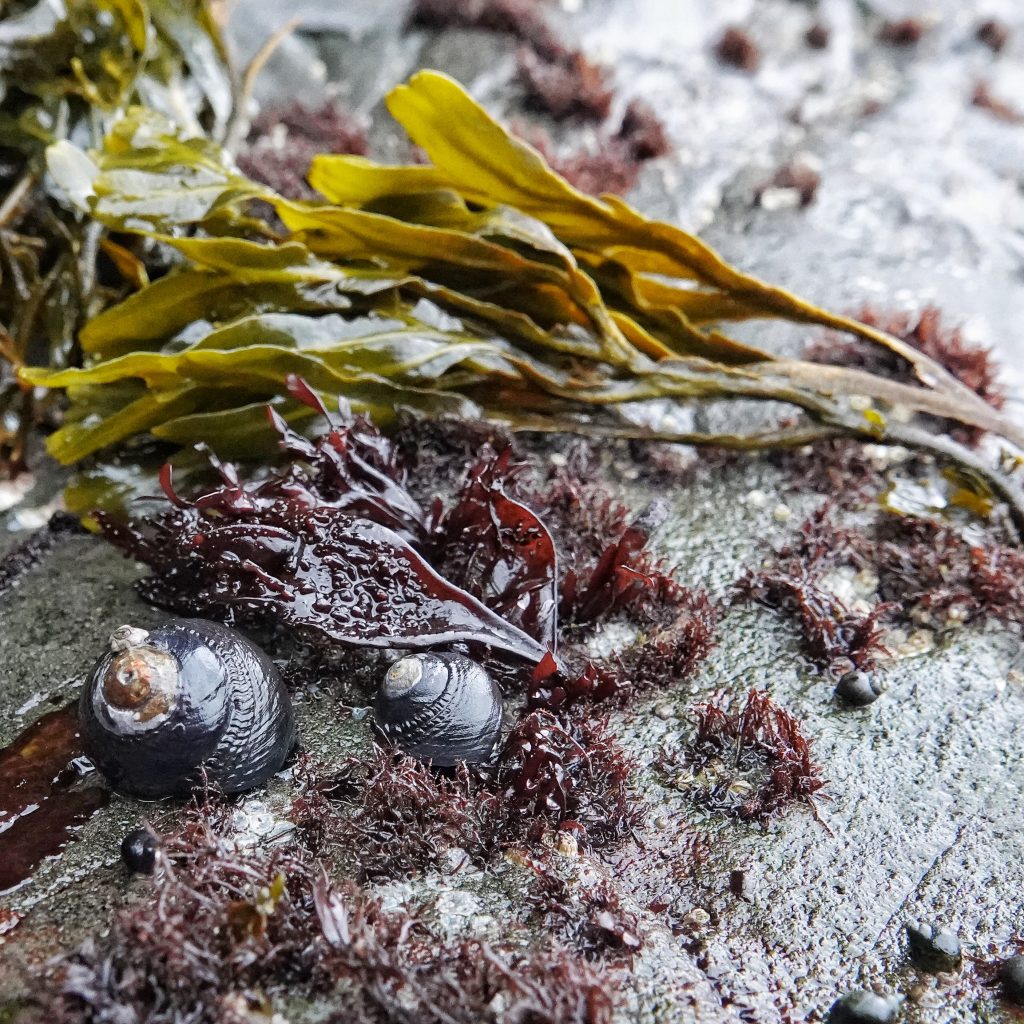
These snails feed on various algae (of types known to most of us as ‘seaweed’), using their serrated tongue (radula) to rasp it into pulp. Unlike most terrestrial snails they are not hermaphroditic, but instead (like most marine snails) have males and females, and reproduce by merely broadcasting eggs and sperm into the water (usually in late summer/early fall in our region), hopefully in unison with other conspecifics doing the same. Their shells are a favored substrate for the slipper shell Crepidula adunca, which filter feeds from that perch, and for the limpet Collisella asmi, which feeds on the microalgae on the snails shell. And after the snail has died, hermit crabs move in to utilize the shell for their armor.
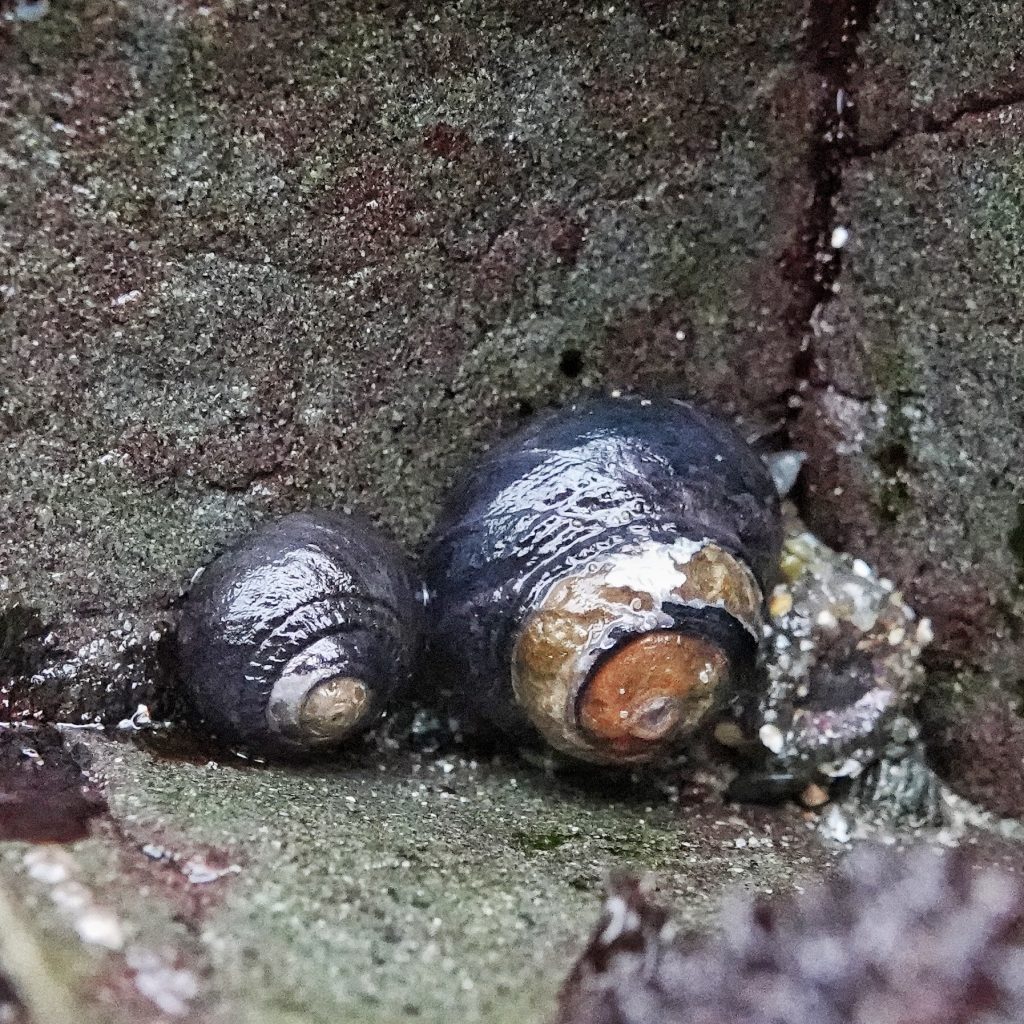
Black Turban Snails were harvested for food by indigenous coastal peoples, sometimes in great numbers because of the aggregations they may form, although they were not a staple of their diet. They are also taken by modern foragers, to the point where populations were threatened, and strict harvesting rules enacted. It is still illegal to harvest marine snails in Washington, but with a valid shellfish license you can take up to 10 per day in Oregon.
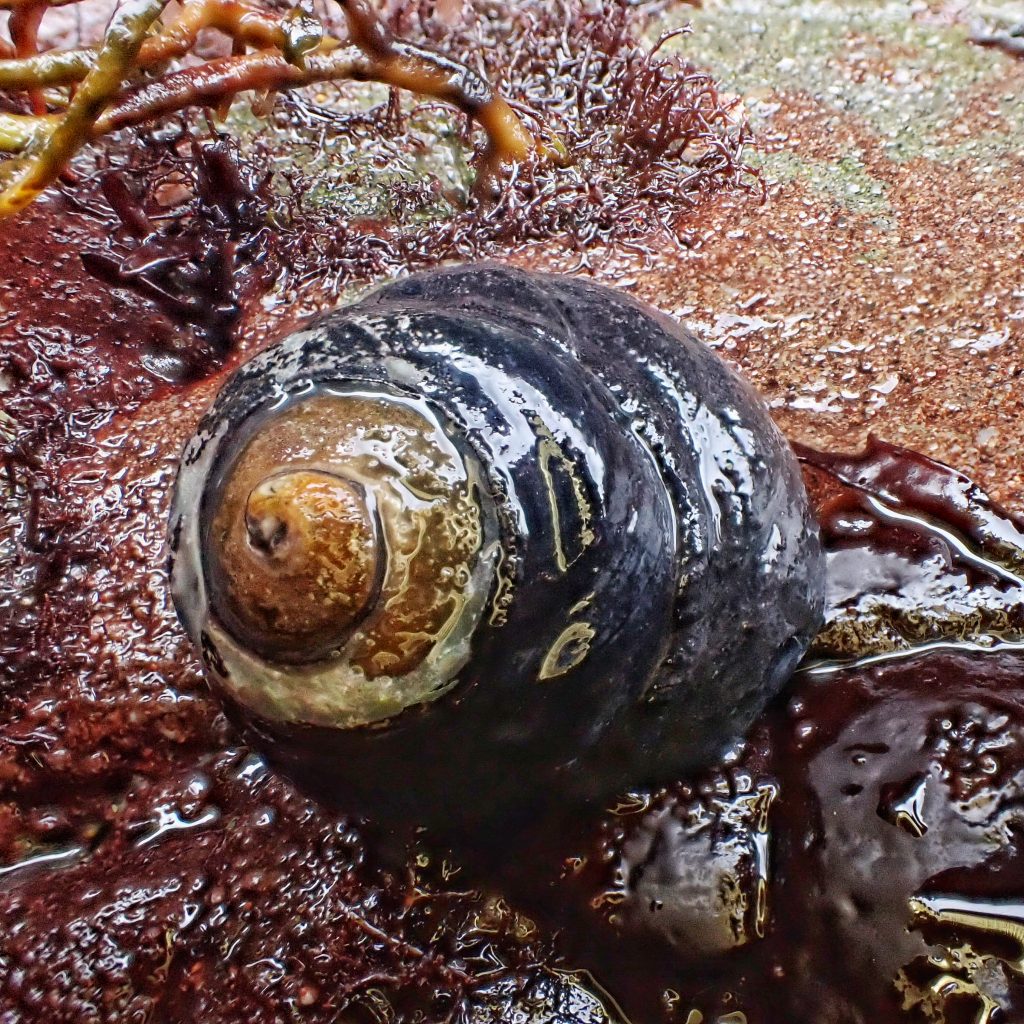
Description-Medium sized (up to 1.25” in diameter, and usually about as tall as wide), pyramid shaped marine snail with a black shell that is usually weathered to pearl, red, or white near the apex, a closed umbilicus, and two teeth inside the aperture.
Similar species–Tegula pulligo is brown and has an open umbilicus; Tegula brunnea is brown and has only one tooth inside the aperture.
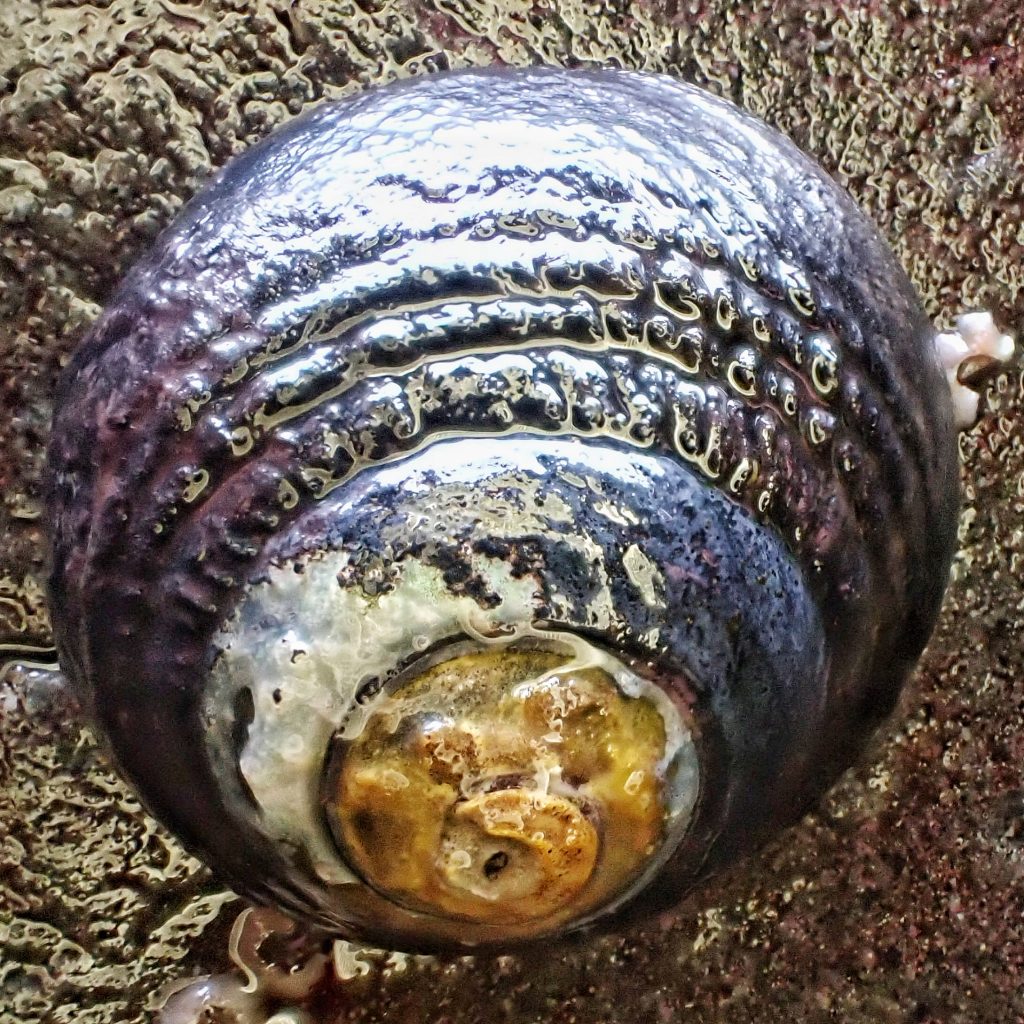
Habitat-Mostly on and among rocks in the intertidal (-2-+2’) areas of the outer coast; most abundant in open rocky areas, rather than those covered by algae.
Range-Southern BC to Baja; all along the rocky outer coast in our region; rare to absent in the Puget Sound and Straits of Juan de Fuca.
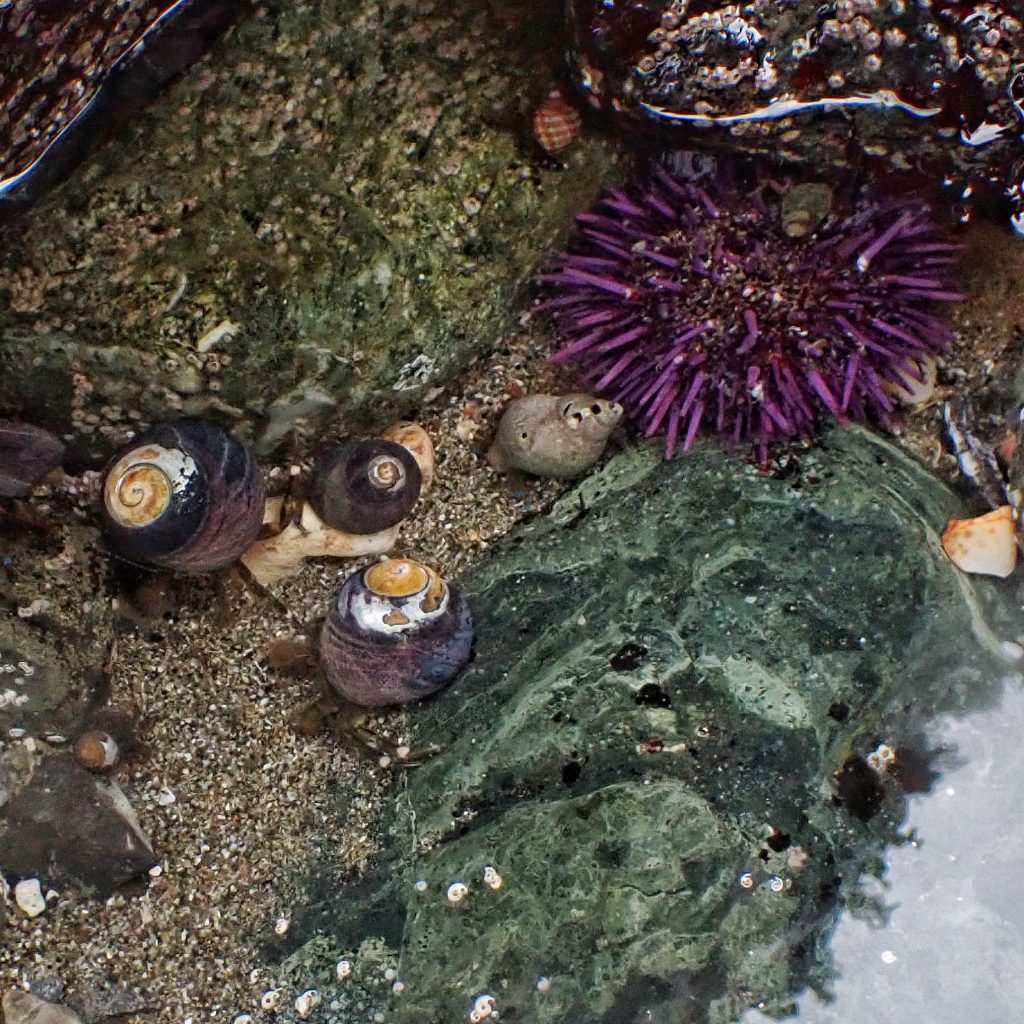
Eats– Grazes on algae, mostly soft algae such as Macrosystis, Nereocystis, and Mastocarpus.
Eaten by-Sea otters, red rock crab, Pisaster ochraceus (ochre sea stars), octopus, predaceous snails.
Adults active-Year around
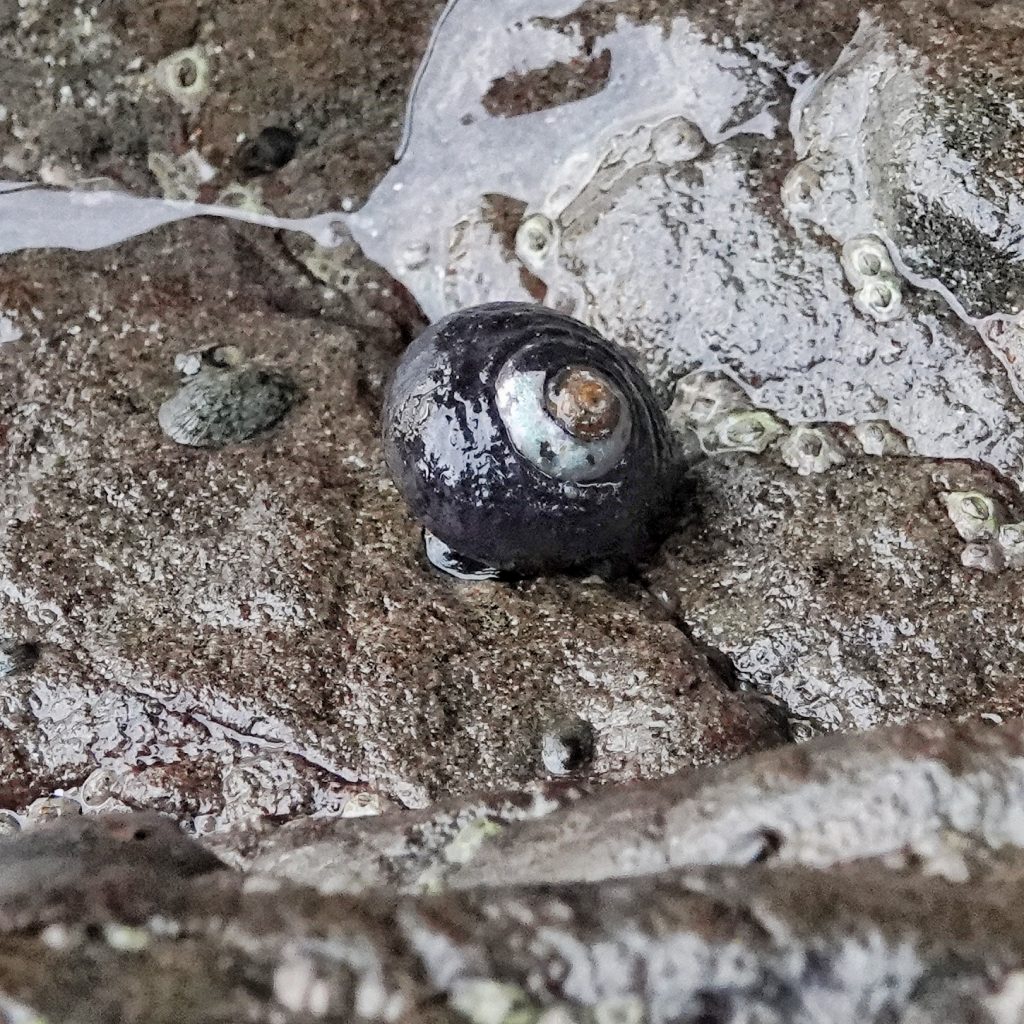
Life cycle-In our region they appear to spawn only once per year, usually in late summer/early fall; they are not hermaphroditic, and are broadcast spawners, with each sex releasing eggs or sperm to be commingled in the water; fertilized eggs hatch into swimming, non-feeding larvae (called veligers) in roughly 40 hours, and within 2 weeks they settle onto a substrate and metamorphose into juvenile snails, losing their velar cilia, and thus their ability to swim; it appears to take 5-7 years to reach sexual maturity, and in our region adults may live for another 30 years.
Etymology of names–Tegula is from the Latin word for ‘roofing tile’ and presumably refers to the shells. The specific epithet funebralis is from the Latin word for ‘funereal’, and apparently refers to the black color of the body, rather than the black of the shell.
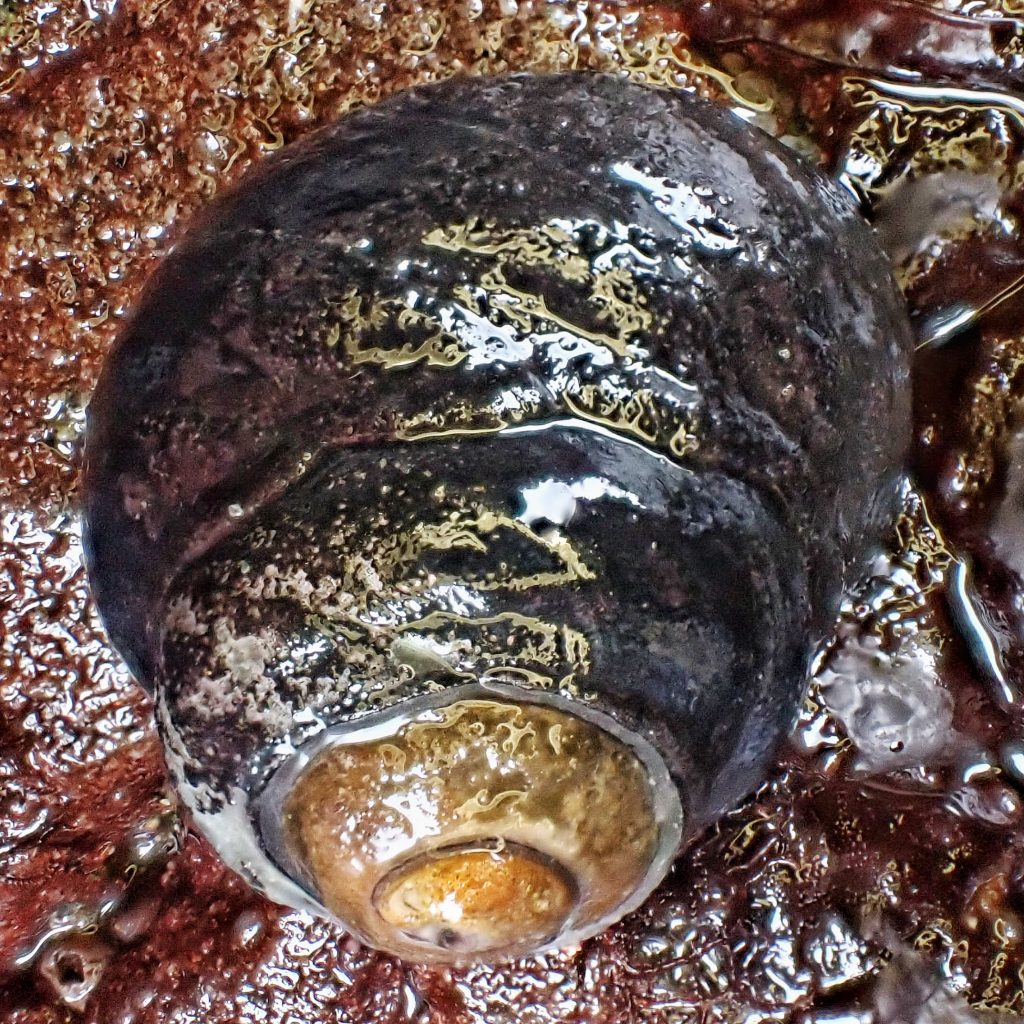
Black Turban Snail (Tegula funebralis) « Extension’s Sustainable Tourism Blog
https://www.centralcoastbiodiversity.org/black-turban-snail-bull-tegula-funebralis.html
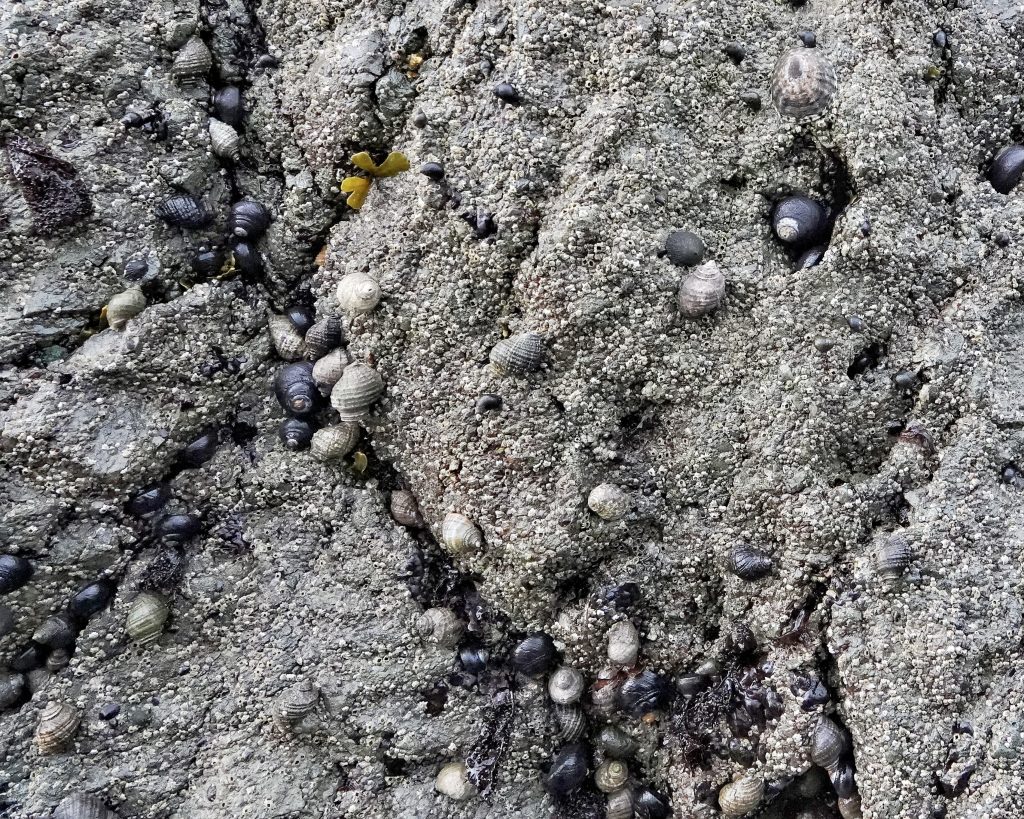
Thanks, Interesting entry. For those of us who are ignorant, it would be helpful to have something for scale inserted in some of the photos (e.g. a ruler with visible marks, quarter coin, or a dollar bill, the fisherman’s guide to a legal sized trout.). I realize that your description gave a dimension, but it is not quite the same.
I have been reluctant to do that, Michael, because it seems like it would detract from the aesthetics of the photo, and some things won’t sit still while I dig out a coin. But you’re not the first person to mention this, and I’ll see what I can do.
Understood. That is why I suggested it for only some photos instead of all. In any event it is not critical.